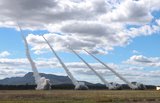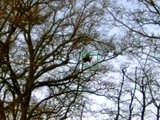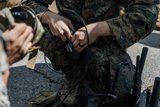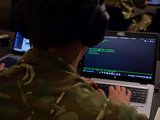Australia looks towards space with force restructure, investment and training
Australia is looking to improve its presence in space with a focus on communications and creating a dedicated segment of its defence forces committed to the domain.
The Space Tracking and Surveillance System (STSS) Demonstration satellites recently showed the ability of the space-based sensors to maximize defended areas through earlier tracking of missiles, thus allowing quicker launches by interceptors, known as a "force multiplier" capability. The two missile defense satellites, built by Northrop Grumman Corporation as the prime contractor and Raytheon Company as the sensor payload provider, observed an Aegis test Oct. 6 involving two missile launches within hours of each other from the Pacific Missile Range Facility, Hawaii.
This Aegis test event showed the ability of STSS to view a dim medium-range missile, observe the target with both tracking sensors through booster burnout, and continue to observe the spent booster well into the post-boost midcourse phase.
Both STSS satellites transmitted tracking data to the Enterprise Sensors Lab (ESL) at the Missile Defense Integration and Operations Center at Schriever Air Force Base, Colo., where the information was processed and fused with data from other sensor assets, to form a stereo track of the target vehicle.
"The ability to form a stereo track from STSS sensor data is a significant precursor to demonstrating the ability to support an Aegis Launch on Remote capability," said Doug Young, vice president of missile defense and missile warning programs for the Northrop Grumman Aerospace Systems sector.
He noted that the STSS satellites are scheduled to participate in future Aegis test events to demonstrate that their stereo track accuracy is sufficient to enable a successful Aegis launch on remote intercept of a target missile.
"The launch on remote capability is a force multiplier for the Ballistic Missile Defense System," Young said. "Giving Aegis the ability to launch an interceptor against a target before it comes into its field of view permits earlier intercepts and significantly increases its defendable area. Working closely with the Missile Defense Agency, we continue to push the operational envelope of the STSS Demonstration satellites to help define the requirements of a next-generation missile surveillance and tracking satellite constellation."
Source: Northrop Grumman

Australia is looking to improve its presence in space with a focus on communications and creating a dedicated segment of its defence forces committed to the domain.

The Portuguese company’s naval communications system is in service across more than a dozen countries. It has turned to its home nation for support in developing a new vehicle based C2 system.

The Vision4ce Deep Embedded Feature Tracking (DEFT) technology software is designed to process video and images by blending traditional computer vision with artificial intelligence (AI) algorithms to present actionable information from complex environments.

Persistent Systems has been cleared by National Security Agency (NSA) to transmit sensitive data on commercial networks. The devices are added to the NSA’s Commercial Solutions for Classified (CSfC) component list which also includes other companies’ products providing the same security.

The release of the UK’s Strategic Defence Review (SDR) has been long promised as mid-year. It is possible it could be as early as 2 June although the UK Ministry of Defence (MoD) continues to play its cards close to its chest.

Intelsat outlines how its multi-orbit SATCOM architecture is enhancing connectivity and resilience for special operations forces operating in degraded and contested environments.